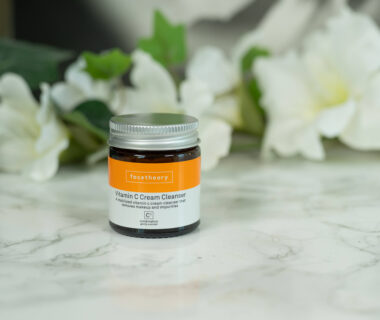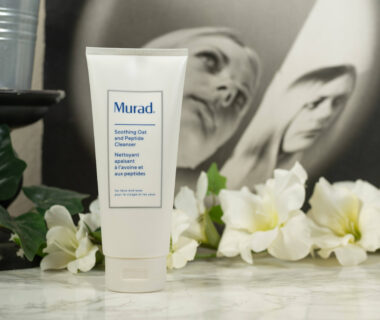ADVERTISEMENT INFO: PRODUCTS DISCUSSED IN THIS BLOGPOST ARE NO PR (GIFTED), BUT LINKS USED ARE AFFILIATE LINKS. I RECEIVED NO MONEY TO WRITE THE BLOGPOST. PLEASE READ DISCLAIMER.
Back in 2019, I started saving up for a NuFace, totally influenced by the before and after pictures I had seen.
I figured, when I had the money, I would have also already had the time to look into the data there is on using microcurrent for prevention of wrinkles and firming the skin, so I would know if buying a microcurrent device was worth your money – after all they aren’t exactly cheap.
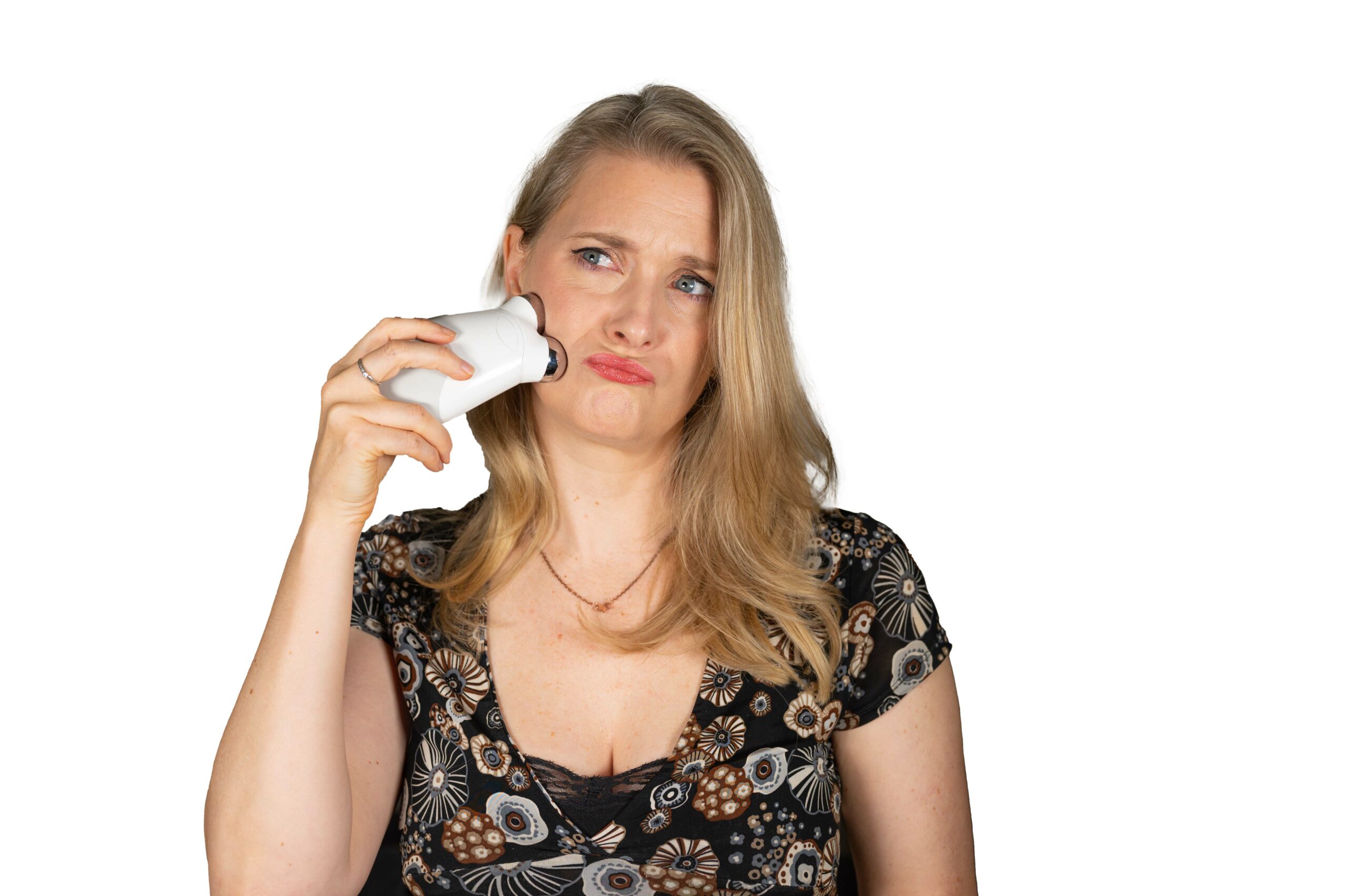
Well, that didn’t happen because my husband got me one for my 40th birthday. Not that I’m complaining, but that meant I had the NuFace before I had any idea of the research. And now, only three years later, I am able to give you both: The science on microcurrent for facial rejuvenation today and my review of the NuFace specifically coming up a little later.
What is microcurrent and why would it be used in skincare?
A current is a flow, in this case of electrical energy, and micro refers to the strength or size, meaning a weak flow of electric energy.
Electricity is the currency our bodies run on, with electrical charges over the cell membrane being kept up through electrolyte gradients between inside and outside of the cell being an important way in which cellular responses are triggered. You can measure this electricity for example in the nervous system, where it is used to transfer information or, for example at the motor end plate, where the nerve is connected with the muscle, for the release of certain transmitters that induce muscular contraction. Basically your body’s own electrical charge runs through the neuron until it reaches the motor end plate, transmitters are released and you flex your biceps or whatever else you were meant to flex.
That doesn’t only happen with your body’s own electricity, but also with electrical currents brought on from the outside, as you will know if you ever touched one of these electric animal fences as a child – electricity comes from the fence and triggers an involuntary muscular response.
So basically, these devices try to use an electric current to trigger responses in the body that lead to improval in your facial appearance.
But what is meant by “improving the facial appearance”?
What do microcurrent devices like the NuFace claim?
Most devices claim similar things: To tone, lift and contour the facial muscles and reduce the appearance of fine lines and wrinkles. Some also claim to stimulate collagen and elastin production.
The thought process here is as following: The microcurrent runs through the muscle, stimulating it, which in turn means the muscle is trained, gets tighter and more bulky and so is able to lift the skin better, both by having a tighter grip to the tissue on top and by having more volume, which means it is lifting the skin simply by the added volume, just like a filter would.
So far so straightforward, the collagen and elastin claims are however a little more vague, as it isn’t exactly clear how they would do that. As microcurrent has, under specific circumstances that I will get to in the next chapter, shown to increase ATP production temporarily, and ATP or Adenosine triphosphate is the energy source used for a lot of processes like protein building or, you guessed it, muscle contraction, my assumption is that the link here is: More ATP, more collagen.
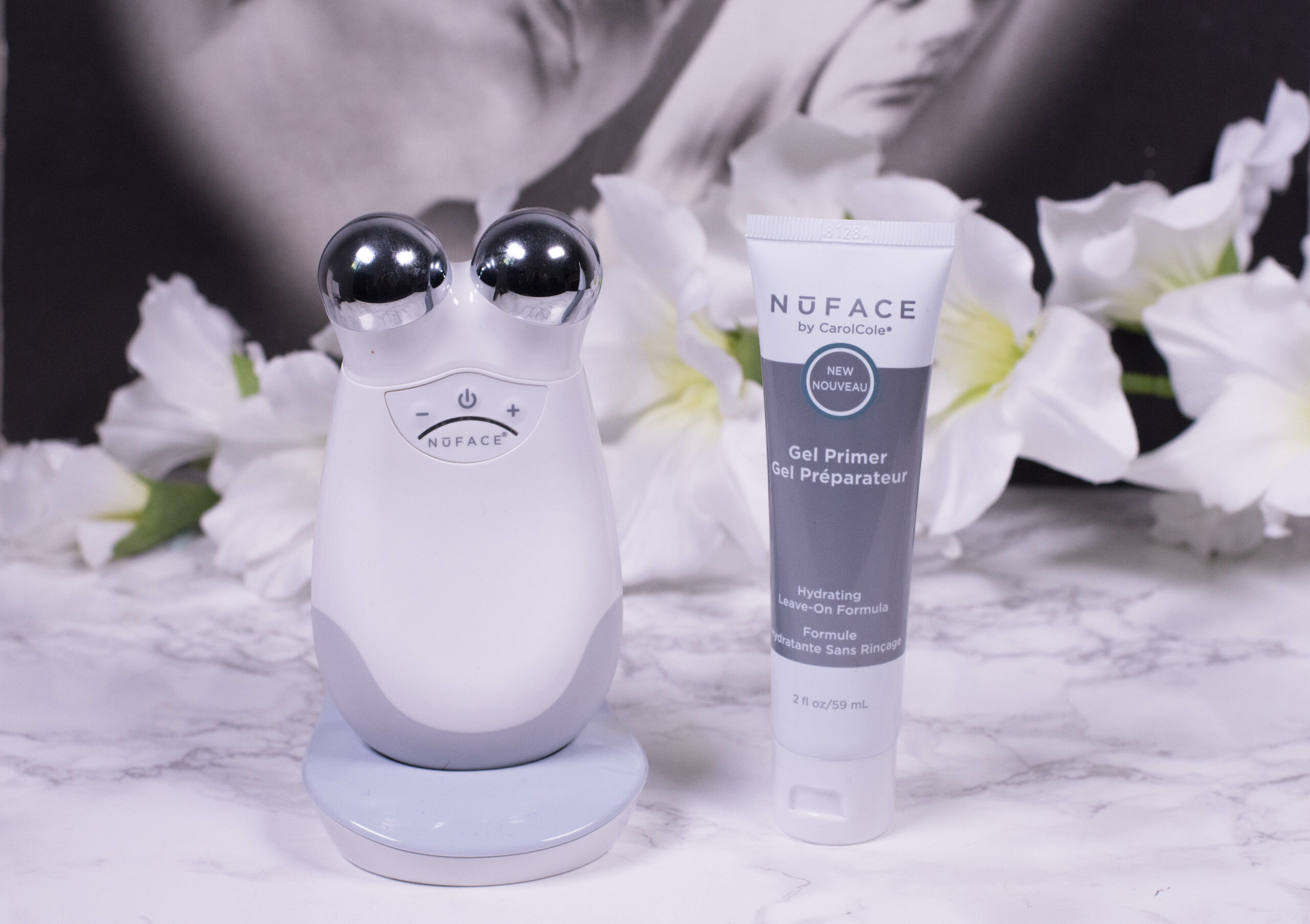
How do you use microcurrent devices?
Microcurrent devices work by sending an electric current through two electrodes that, for that to work, need to be put on your face. The current will go from one electrode to the other and through the tissue in between, ideally a muscle. For that current to flow optimally, you need a conductive gel and cleansed skin as in oil free skin. Not completely stripped, but if you want to use skincare underneath, don’t use facial oil.
Most companies selling microcurrent devices sell a corresponding conductive gel they advise you to use with it, and if you look at the ingredient list, you’ll notice that they contain a few humectants.
This means two things:
1) Using a humectant rich, oil free serum that provides slip will work as well, and…
2) Some of the plumping effect you get is from the gel, not the device.
You can also use any conductive gel you can buy, which is much cheaper, but won’t give you the humectants. It is still what I personally do, because I figure I will do my skincare afterwards anyway.
So you apply plenty of gel – I work in sections so it doesn’t dry up – and then slowly glide the device along the muscular structures of the face you want to tone. Most devices come with either instructional videos or apps to guide you, but after a while you will probably come up with your own routine. If you want me to share mine, just write it down in the comments.
These devices have a quite impressive immediate effect and a potential long-term effect, so while you can use them morning or night, morning will give you the most reward for your effort. I totally get if your mornings are too busy though, mine often are, and as you should do the routine at least five times a week, using it at night might be more practical.
Anyway, and that is important, you need to commit to doing it regularly if you want results, and that might be a deal breaker as it isn’t exactly quick and hassle-free.
Are there studies on the effect of microcurrent?
But are there studies showing that this effort is worth it? Sadly, there aren’t many. How can this be if microcurrent has been around for decades? Well, there are studies on microcurrent, but few that relate to the improvement of facial appearance even loosely, and even less that look at these handheld devices and actual usage on human faces.
We have discussed in previous posts that results found in vitro, meaning in the lab on cells in a petri dish or on isolated parts of rodents skin, can’t be translated one on one to skin that is attached to a human face, and we have also discussed that the amount of time and strength can vary a lot, and that is what holds true here as well.
Let’s first look at the more general studies that might confirm the principle we think microcurrent is operating on in the body:
As for actual human studies, we have one done on the use of electrical microcurrent compared to negative pressure wound therapy in treatment of burn wounds that showed that microcurrent was superior in terms of how quickly the wound was reduced in size, which could support the theory of collagen and elastin production being stimulated.
We also have a study done on elderly patients (aged 65 and older) that received short term microcurrent electrical neuromuscular stimulation and did exhibit increased muscular strength directly afterwards, but here no long term effects were measured and “short term” meant 40 minutes, which is a little longer than you are probably planning on doing your face. And then we have studies done that show the increased ATP production I mentioned earlier, but these were done on rats skin in vitro and had up to four hours of electrical current applied per session, which is again not really comparable to what you do at home.
That doesn’t mean I am convinced microcurrent is useless, we know that the growth of plants can be affected by applying an electromagnetic field and it is often used in medicine for wound treatment or to stimulate osteogenesis or bone tissue, it merely means that while it is certainly helpful in some areas, we don’t know for sure in others.
Now for studies specifically looking at using devices like that (or in office ones) on the facial appearance:
I found one that had 180 women with an average age of 44 do microcurrent 5 days a week, 20 minutes a day, for 12 weeks and then had them judge if they saw an improvement, which the majority did for firmness, tone and lifting, and also measured the actual muscle thickness before and after, showing an increase in muscle thickness.
Another one had 30 women aged 45 years or younger with wrinkles get 30 consecutive microcurrent treatments, each of which lasted 20 minutes, and then had their pictures before and after one month compared by three reviewers that reported an increase in the appearance of forehead lines, but only saw little effects on nasolabial and mouth area. Interestingly enough the subjects were all very pleased with the outcome.
All this combined I think we can state that there is some evidence to support why microcurrent devices could work for tightening the skin by increasing muscle tone and muscle size. As for the increased collagen production through more ATP – also possible, but less evidence.
What does that mean for at home use?
But will this increase in muscular tone actually affect the signs of aging? That is another question. When we look at the reasons for facial aging, muscular atrophy plays a role there, but a much smaller one compared to actual loss of elasticity of the skin or to the redistribution or loss of fat, both of which are most likely not affected by the device. As each face ages differently, it will also depend on which of these factors is most prominent in you and probably how old you are. Judging from anecdotal reports the immediate effect you see is more prominent if you are older and have more sagging.
Is buying a microcurrent device worth it for you?
Before you go out and spend that much money on a device, you need to be very honest with yourself:
- Are you going to use it at least five days a week? Or do you already struggle with cleansing at night?
- Are you doing everything else in terms of sun protection, antioxidants and retinoids? Because these will give more reliable results.
- And are you willing to accept subtle results without being too disappointed?
Because if any of these answers is no, you are better off spending your money elsewhere – on a microcurrent treatment done in office maybe, which will show you if the results on your face are worth it.
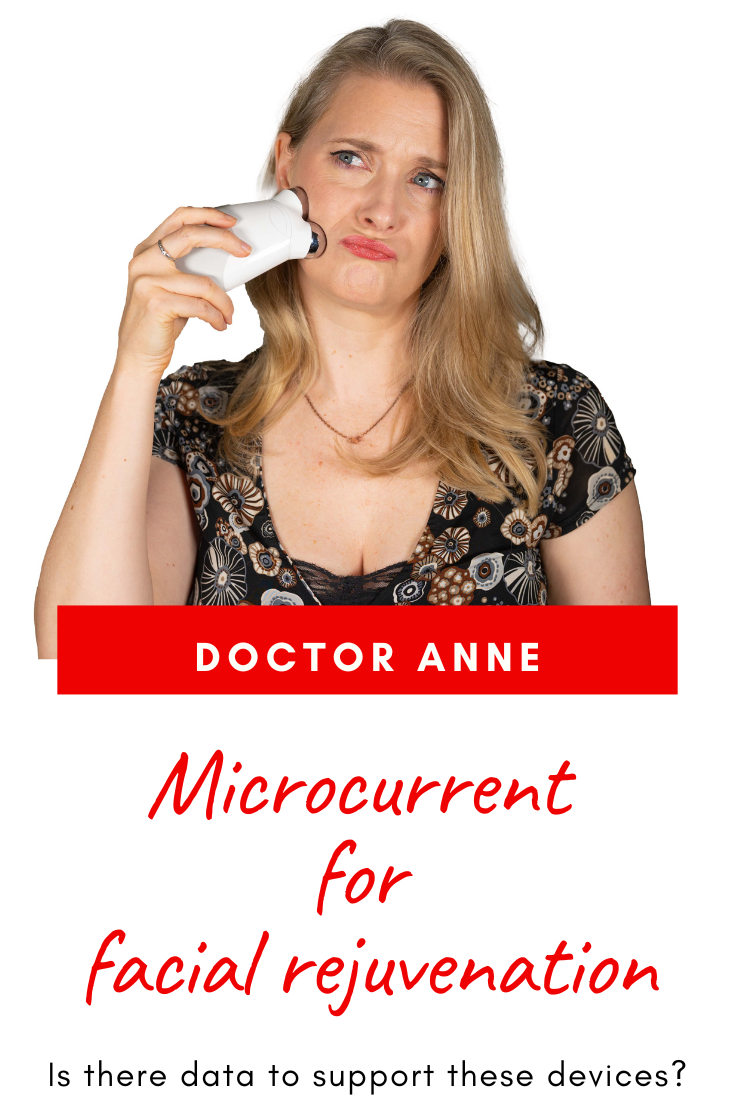
Sources:
Cheng, N., Hoof, V. A. N., & Hoogmartens, M. J. (1982). Generation , Protein Synthesis , and Membrane Transport in Rat Skin. Clinical Orthopaedics and Related Researc, 264–272.
Ibrahim, Z. M., Waked, I. S., & Ibrahim, O. (2019). Negative pressure wound therapy versus microcurrent electrical stimulation in wound healing in burns. Journal of Wound Care, 28(4), 214–219. https://doi.org/10.12968/JOWC.2019.28.4.214
Kavanagh, S., Newell, J., Hennessy, M., & Sadick, N. (2012). Use of a neuromuscular electrical stimulation device for facial muscle toning: a randomized, controlled trial. Journal of Cosmetic Dermatology, 11(4), 261–266. https://doi.org/10.1111/JOCD.12007
Rak Kwon, D., Kim, J., Kim, Y., An, S., Kwak, J., Lee, S., Park, S., Hee Choi, Y., Kyun Lee, Y., & Woong Park, J. (2017). Short-term microcurrent electrical neuromuscular stimulation to improve muscle function in the elderly A randomized, double-blinded, sham-controlled clinical trial. https://doi.org/10.1097/MD.0000000000007407
Saniee, F., Ghafarian Shirazi, H. R., Kalantari, K. K., Yazdanpanah, P., Soltani, A. R., Dabiri, N., Shirazi, N. G., & Karimpour, F. (2012). Consider of micro-current’s effect to variation of facial wrinkle trend, randomized clinical trial study. Life Science Journal, 9(3), 1184–1189.
Wong, Michelle. Microcurrent devices: Science and Foreo Bear Review. https://labmuffin.com/microcurrent-devices-science-and-review/
Microcurrent devices to consider
Don’t forget to check out the Discount Code Page on top if you want to save some money on your next skincare purchase.
If you want to get a vote in the next Ask Doctor Anne Topic, Ingredient Spotlight or product I review, don’t forget you can head over to my Patreon account to get more involved!

